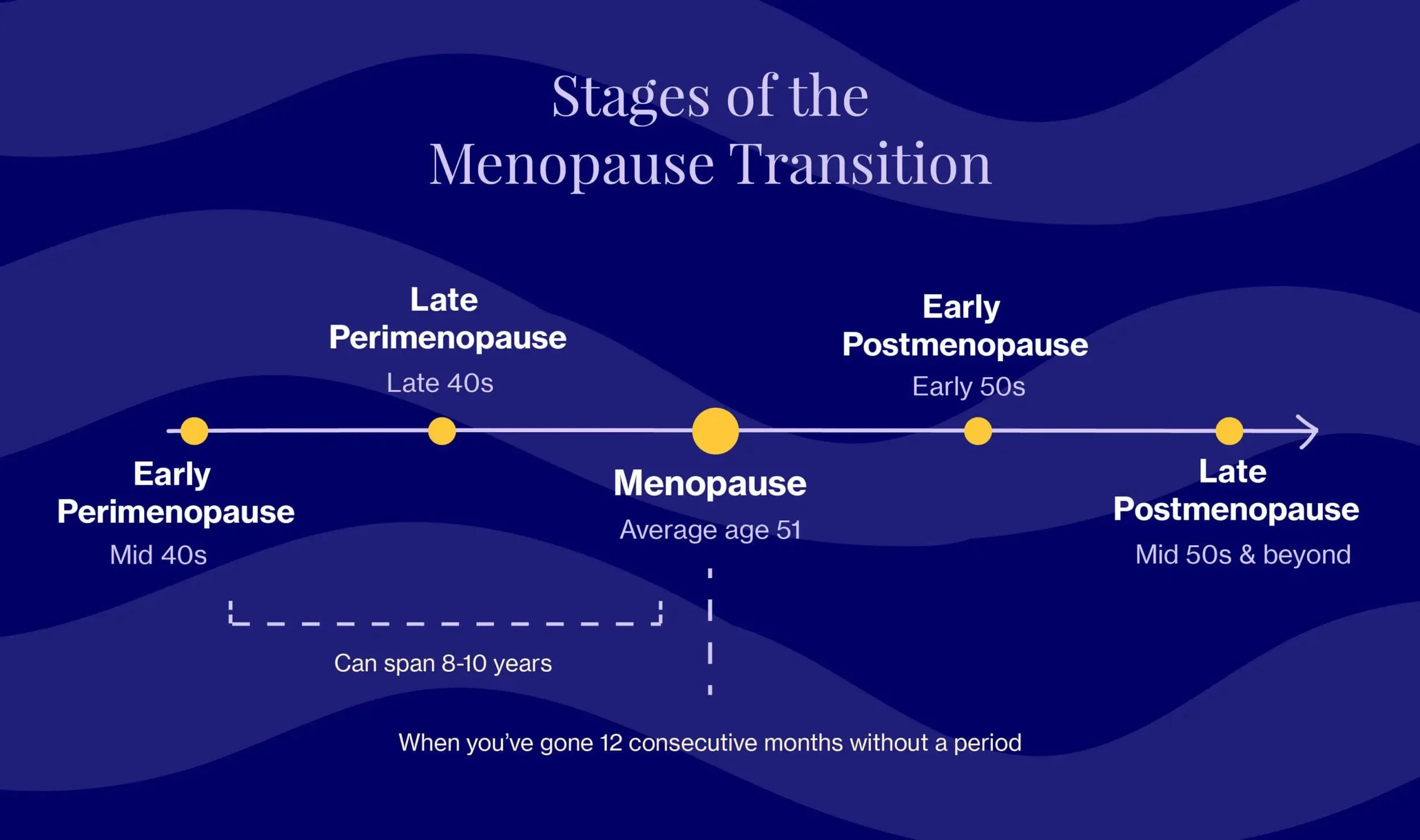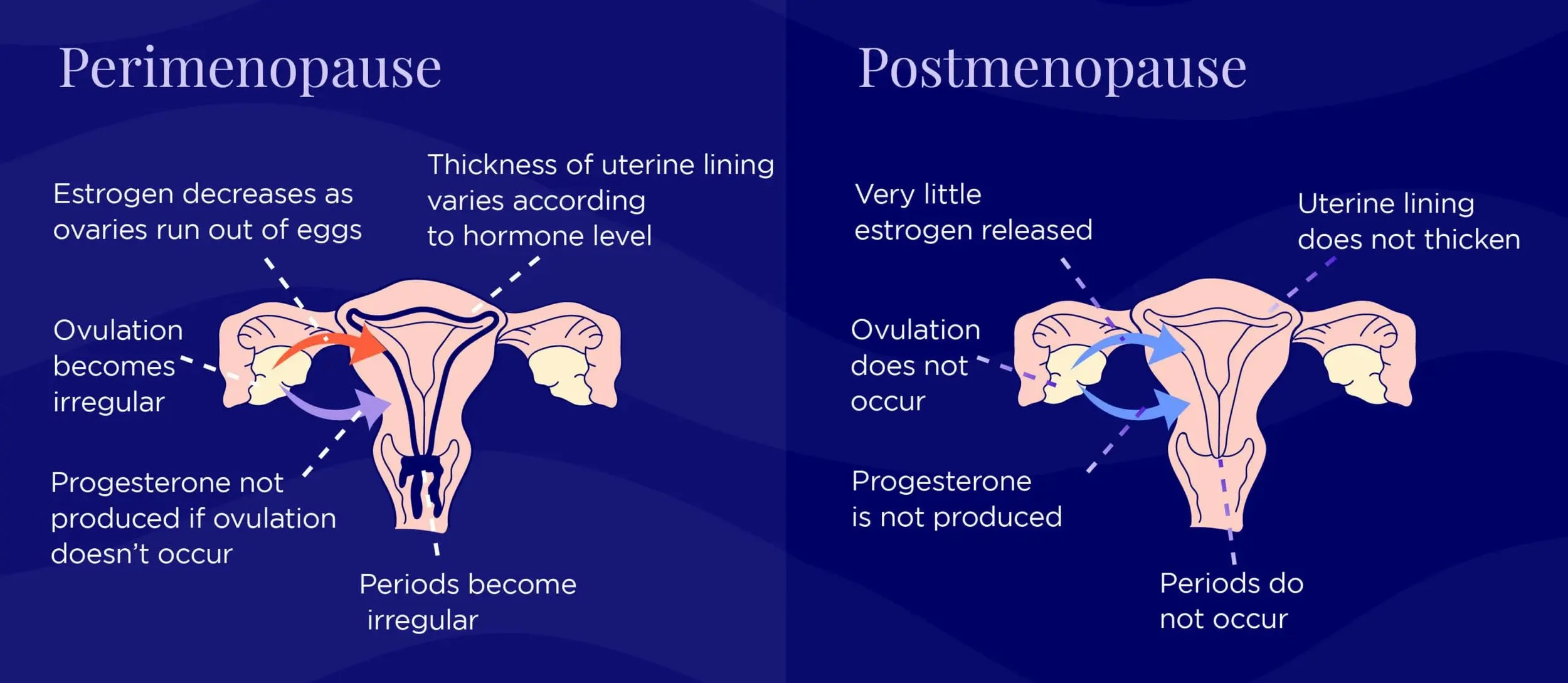Perimenopause
When, How & Why
Perimenopause can be wildly unpredictable. Periods change dramatically, becoming heavier and more frequent, or they can go in the other direction. It’s generally a confusing time that catches a lot of us by surprise (so no, it’s not just you).
The transition in its entirety takes 8-10 years to move through, and while most of us will start in our mid-40s, some may begin years earlier. Perimenopause is often broken down into two general phases: early perimenopause (when periods can still be regular, which causes some confusion) and late perimenopause (marked by skipped and/or irregular periods — more aligned with what people typically think of when they hear perimenopause or menopause).
Throughout the remainder of your journey, you may notice a number of the following perimenopausal symptoms (but not always, and not all at once).
Hot flashes and night sweats
Irregular periods
Difficulty sleeping
Emotional changes (e.g., irritability, mood swings, and mild depression, especially before your period)
Difficulty with concentration and short-term memory, aka “brain fog”
Vaginal dryness and/or discomfort during sex, and dry skin.
The Takeaway
There’s no such thing as a one-size-fits-all experience. Hormonal changes, and the way symptoms show up, are anything BUT linear.
Like timing, perimenopause symptoms can vary, and each woman’s experience will be unique. We do know, however, that there may be certain racial and ethnic differences. One study in particular showed that African American women experience the worst vasomotor symptoms (hormone-related temperature dysfunction, e.g., hot flashes and night sweats), while Asian women reported the most mild.
Symptoms & What To Expect
It’s common to mistake the telltale signs of perimenopause — think hot flashes, night sweats, and mood swings — for those of menopause. But here’s a surprising fact: for many, these symptoms actually start to subside once we reach menopause, which means the worst may very well by over by this point (*cue the sigh of relief*).
Below are common symptoms that signal the beginning of perimenopause, all of which can be traced back to changing hormone levels. But remember, not everyone will experience these symptoms. Our goal here is to empower you with knowledge to manage the symptoms IF (key word) you do indeed experience them.
Weight gain
Worsening PMS with both emotional & physical changes (e.g., breast tenderness and heightened anxiety)
Irregular periods, which is an umbrella term that can encompass short or skipped menstrual cycles and heavy bleeding (often one of the earliest symptoms)
FAQ about perimenopause symptoms
Are the symptoms constant for the entire duration of menopause?!
It depends. Some symptoms come and go and others are more constant. What you can expect, however, is for symptoms to peak about 1-2 years prior to the onset of menopause due to an accelerated drop in estrogen levels.
How long will these symptoms last?
Typically five years — but remember, the perimenopausal experience isn’t one-size-fits-all for every woman again. Some may only experience a change in their period when nearing menopause, while others will experience it for upwards of 10 years.
Are these symptoms *always* due to perimenopause?
Not always, no. There are several common conditions, including thyroid abnormalities and even medication side effects that can cause similar symptoms, so be sure you are properly evaluated by your healthcare provider.
Is there a test for perimenopause?
Yes and no…it’s complicated. Doctors may order tests to check your hormone levels and thyroid function, but it’s imperfect at best since hormones fluctuate all. the. time. during perimenopause.
“Menopause is a doorway to a new era of self-discovery and self-love”




